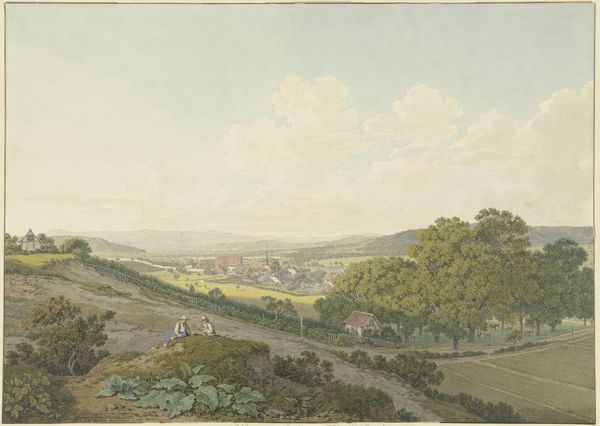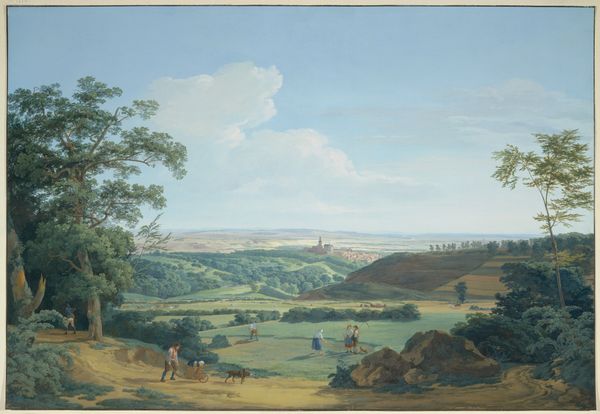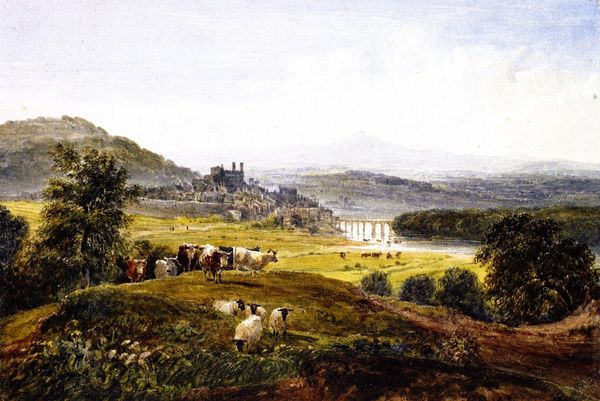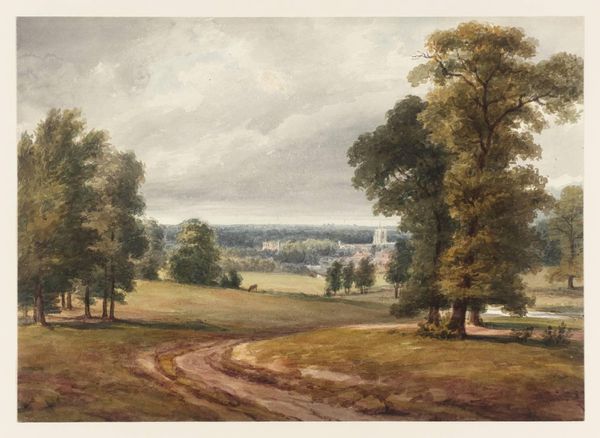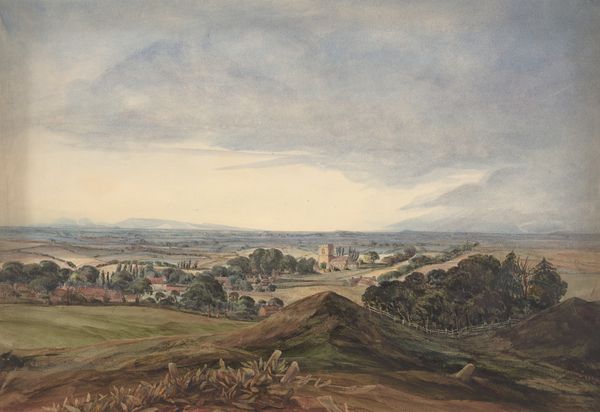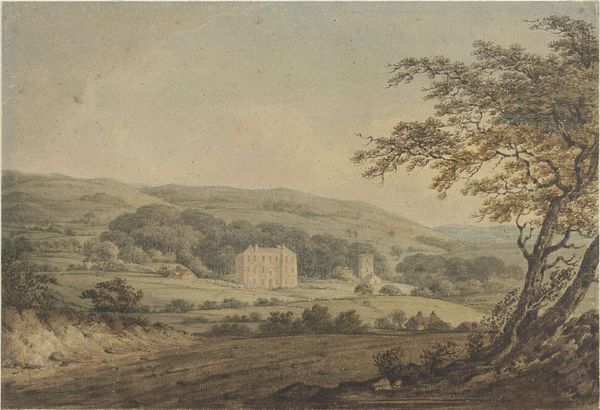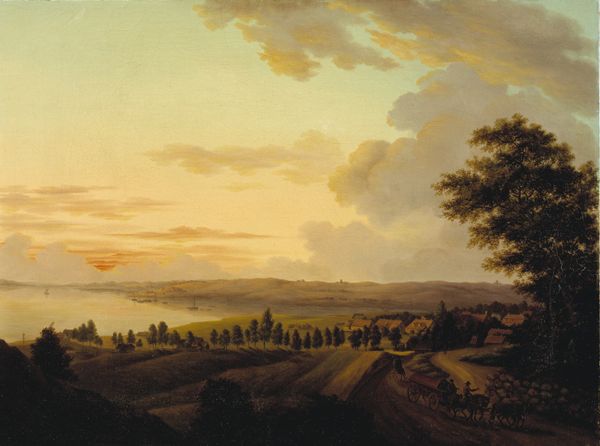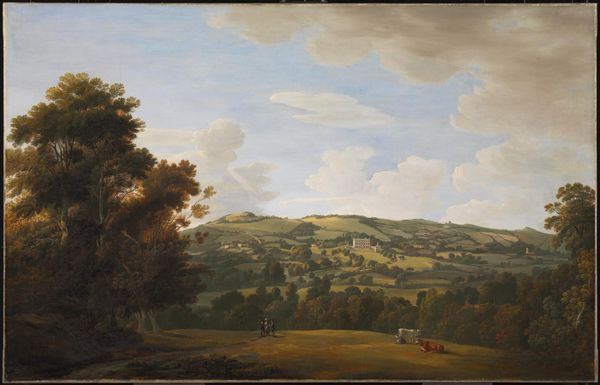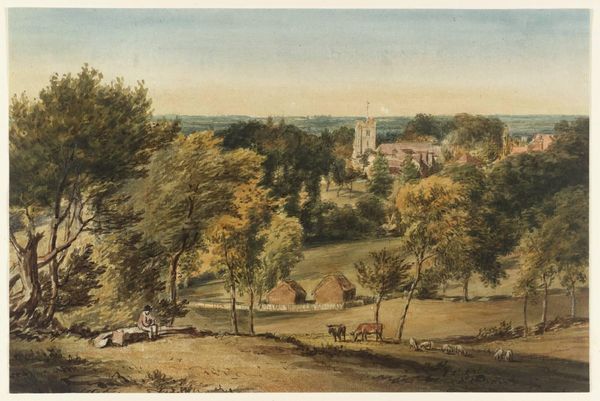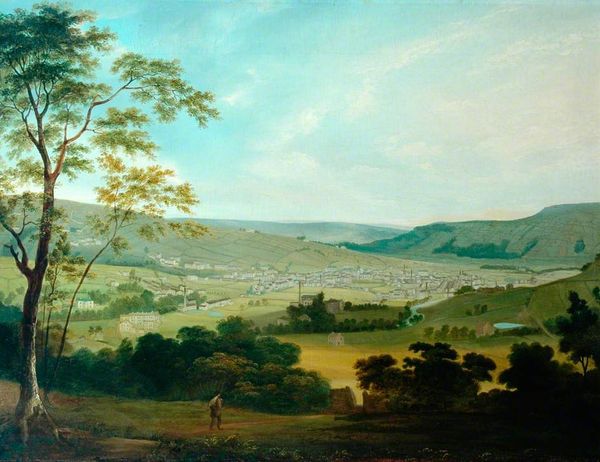
painting, watercolor
#
painting
#
landscape
#
watercolor
#
romanticism
#
natural environment
#
watercolor
#
realism
Dimensions: overall: 65.9 x 91.6 cm (25 15/16 x 36 1/16 in.) framed: 80 x 105.4 x 6.9 cm (31 1/2 x 41 1/2 x 2 11/16 in.)
Copyright: National Gallery of Art: CC0 1.0
Editor: This is George Cuitt the Younger's watercolor titled "Easby Abbey, near Richmond," dating roughly from 1821 to 1854. The scene is bathed in a kind of gentle, hazy light that gives the ruins a soft, almost dreamlike quality. What social narratives are at play here, when representing these ruins in this way? Curator: Well, first, let’s consider the very act of representing ruins. The Romantic era was fascinated by them. But it wasn’t merely an aesthetic preference; it reflected anxieties about power, decay, and the fleeting nature of empires. Think about the Dissolution of the Monasteries, and the Crown seizing church assets. The Abbey's state of ruin wasn't just accidental; it was a direct result of political and religious upheaval, impacting communities across England. How does Cuitt’s softened realism potentially obscure that very real, material history? Editor: That's interesting. So the romanticized depiction might downplay the actual violence and dispossession? It's almost a form of… artistic gentrification? Curator: Precisely. And who gets to control that narrative? Who benefits from a softened, sentimental view of the past? This connects directly to questions of land ownership, social class, and the construction of national identity. Cuitt gives us a picturesque view. Editor: This reminds me to consider whose stories are often left out in historical landscape paintings. I'm starting to see a new layer of meaning now, one that prompts a lot more questions. Curator: Excellent. The landscape is never neutral; it's a contested space where power, history, and ideology converge. Looking at the present we see how nature continues to be framed according to what it gives, instead of being valuable of itself. Editor: I see now how a seemingly straightforward landscape painting can hold complex social and political implications. Curator: Indeed, and those implications continue to resonate today.
Comments
No comments
Be the first to comment and join the conversation on the ultimate creative platform.

